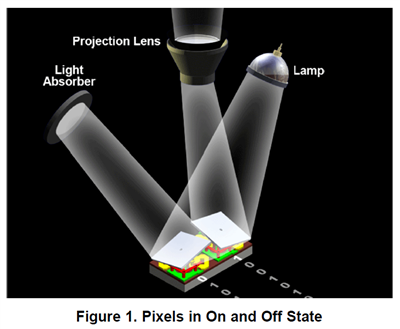SSZTB07 August 2016
It’s the time of year when everyone is
starting to gear up for another school year and all that entails. The beginning of
the school year represents a fresh start, new ideas and an influx of learning.

With this in mind, we started thinking about our technology and how we can help anyone from students to educators to engineers learn about our technology and get started designing. We get questions from users of all skill levels asking how they can develop a specific display or how they can use light control for sensing applications like spectroscopy and we want to help turn your great idea into something real.
One thing we’re aware of is that not every student, or developer for that matter, may realize how they can utilize DLP technology. That’s why we created a section on TI.com focused exclusively on how you can get started designing with our solutions. This site provides a detailed overview of our technology, what it can do, and how it’s playing a starring role in more than just projecting the latest movies at your local cinema. On it, you’ll find a variety of helpful reference materials including technical documents, and support and training resources such as our TI Design Network of independent third-party companies that have DLP technology expertise. It’s a great way to become familiar with our technology and provides an opportunity to gain a deeper understanding of how DLP chips can be used in your next project or design.
There also are those of you who already have a design in the works. Whether it’s a concept or a working prototype that just needs a boost, our DLP tools and software resources can guide you to an EVM, software bundle, or reference design to better equip you. That way you can spend time perfecting your design instead of reinventing the wheel. These resources can help you get started incorporating pico displays into your design or developing things like 3D machine vision, 3D printing, and spectroscopy solutions.
Whether you’re making the next leap forward in smart appliance displays or creating a portable glucose analyzer, here’s to a year of fun, excitement and innovation. We look forward to seeing where your creativity takes you.